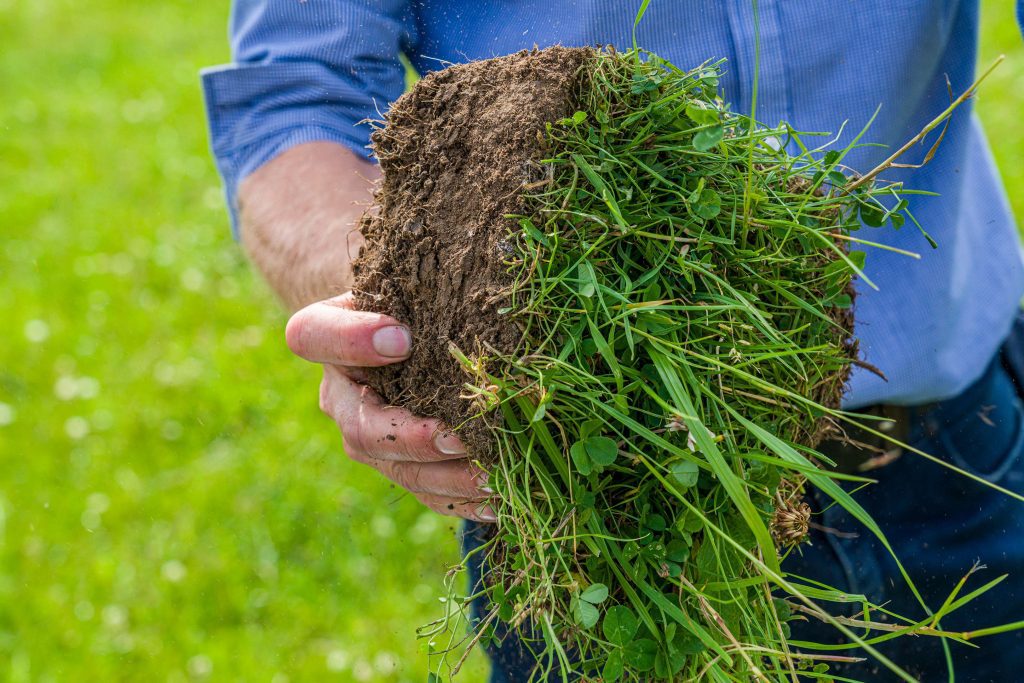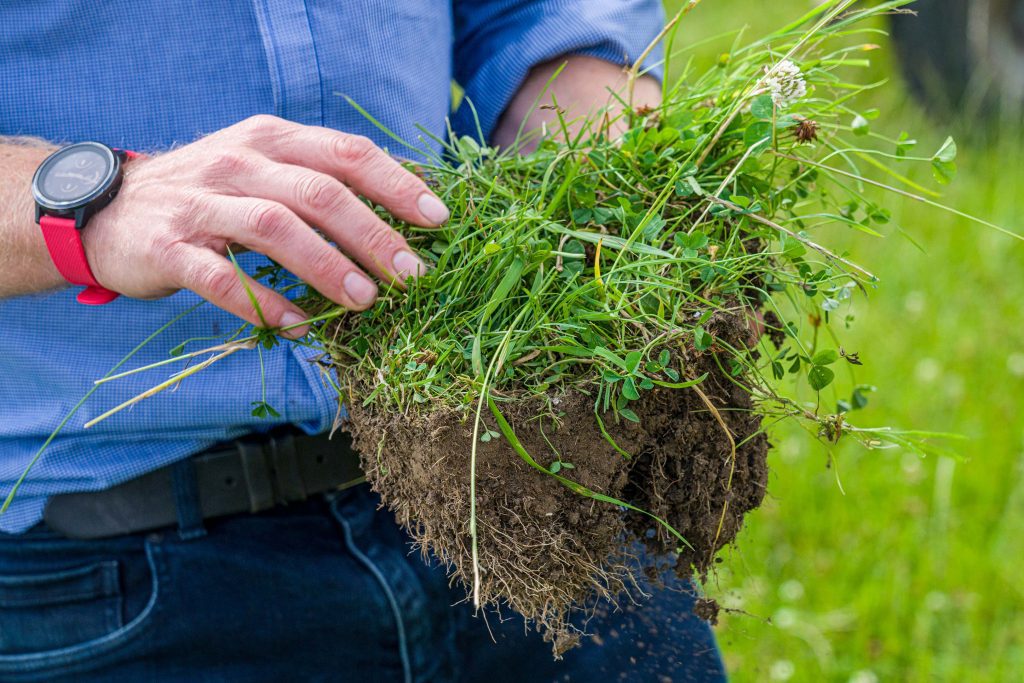Soil fertility drives production, a healthy, fertile soil having the ability to store and supply nutrients to the crop it supports, says Germinal Technical Director Dr Mary McEvoy.
Understanding and improving the physical, biological and chemical status of your soil will sustain optimal grass output and help your soil reach its full potential.
In our previous article, Improve soil health by measuring what’s below the ground, we described soil tests able to assess the health and fertility of your soil.

Using soil fertility test results
Your soil test results give you information about the P and K status of each field, as well as a pH value. Research shows many Irish grassland soils are not at the optimum levels, particularly pH, so it’s worthwhile checking as these are central components of good soil fertility.
Soil pH
The right pH is important; too low and nutrients remain locked-up in the soil, making them inaccessible to plants. Maintaining optimum soil pH will increase soil microbial activity and improve the availability of nutrients.
It is also the most important deficiency to correct and the cheapest. Grassland soils need a pH of 6.2 to 6.5 (pH 5.5 on peaty soils) and can be corrected using lime.
Apply lime according to soil test recommendations but a maximum of 7.5 t/ha (3 t/acre) should be applied in any one year. For recommendations above this amount, split the application and apply the balance two years later.
Where lime is required on derogation farms, there must be a farm scale liming programme.
Benefits of correcting soil pH
- Releases up to 80 kg nitrogen (compared to a low pH soil)
- Makes P and K in the soil more available
- Increases efficiency of applied N, P and K fertiliser
- Increases grass DM yield by approx. 1.5 t DM/ha (compared to a low pH soil)
- Promotes soil biology and earthworm activity
Phosphorus (P)
Phosphorus is necessary for the physiology of plants, including photosynthesis, root and tiller development. Like other nutrients, P can be locked-up in the soil if the pH is too low. Phosphorus use is restricted within the Nitrates Directive and chemical fertiliser can’t be applied now until the end of January or mid-February depending on the Zone in which your farm is located.
Potassium (K)
Potassium can be spread all year round without any restrictions on its application, although there are points to consider. In spring, a single K application should not exceed 90 kg/ha. If your requirement is above this level, it is best to apply the balance in the autumn.
Autumn is a good time to apply K as applying high levels to swards growing rapidly in spring can cause grass tetany due to it preventing magnesium uptake by the grass crop.
Soil structure
Soil health is not just driven by its nutrient status but also its physical structure. Doing a visual examination and evaluation of your soil (VESS) highlights areas of poor soil texture and compaction. While this is not the time of year for subsoiling or aerating your soil, if you find areas of concern, it’s a job to plan for next year.

Reducing the impact on soil, through poaching or travelling vehicles, lowers the risk of compaction and helps maintain good soil structure.
Being prepared
Understanding the factors affecting soil fertility on your farm now is essential for managing and protecting your soil in the future. Between now and January is the ideal time to be testing your soil, leaving at least three months after the last application of P and K.
Taking care of the physical, biological and chemical properties of your soil will improve your farm’s sustainability and productivity while reducing input costs through the efficient uptake of applications.
To learn more, watch our webinar about Managing soil health for productive grassland management .
Ask a grass and forage expert about soil fertility
